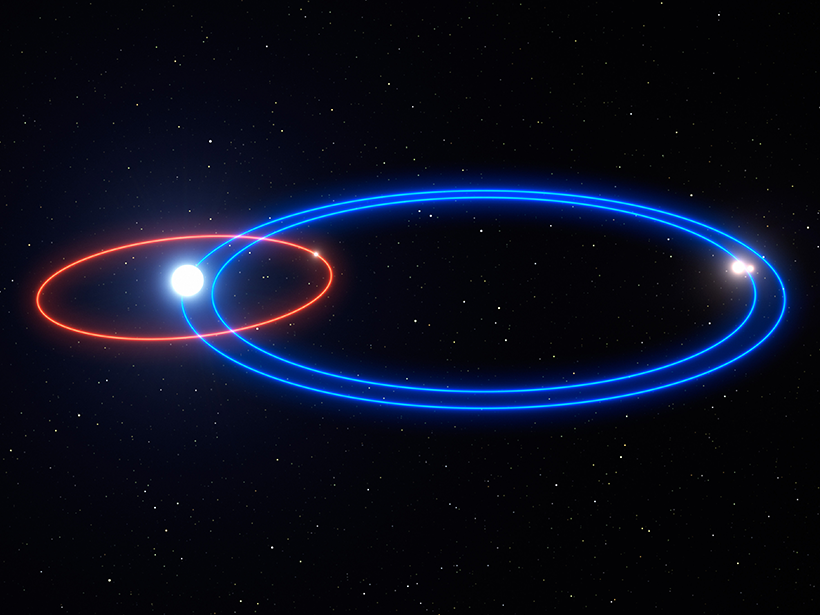A newfound exoplanet orbiting within a triple-star system has scientists scratching their heads.
Located some 340 light years from Earth, the gas giant called HD 131399Ab weighs in at about 4 times the mass of Jupiter, gets illuminated by not one but three stars, and takes 550 Earth years to complete one loop around its central star.
That star, dubbed HD 131399A, exceeds our Sun’s mass by 80% and orbits a center of mass shared with a smaller star, HD131399B, which is itself orbited by yet another star, HD 131399C.
Each of the stars exerts gravitational force on the exoplanet. For much of that giant planet’s half-millennium orbit, someone on its surface would see triple sunrises and sunsets, its discoverers said.
That spectacle may sound like a treat, but for about a quarter of the giant planet’s orbit, the paired stars set while the big star rises (and vice versa), brightening up the exoplanet with constant starlight, said Kevin Wagner, a first-year Ph.D. student at the University of Arizona in Tucson and lead author on a paper reporting the discovery of the exoplanet. He and his colleagues published their findings today in Science.
Unlike many other recently discovered exoplanets, the researchers found HD 131399Ab with direct imaging, meaning that they observed and studied light from the planet itself. It was the first exoplanet discovered by the team in a new search for exoplanets made with the Very Large Telescope in Chile’s Atacama Desert. The researchers used the telescope’s new auxiliary Spectro-polarimetric High-contrast Exoplanet Research (SPHERE) instrument, which is designed specifically to capture telltale infrared radiation from exoplanets while blocking out the light from surrounding stars.
Precarious Orbit
The planet isn’t the first found in the middle of a three-star dance, but its position relative to the stars piqued the team’s curiosity.
The planet is trapped in a precarious balance, in a fragile yet stable orbit amid the stars’ powerful gravitational fields.
Generally, planets in three-star systems orbit close to one star while the other two stars orbit much farther away. In another three-star system, called 51 Eri, the planet orbits a star at 13 astronomical units (AU) while the other two stars orbit at 2000 AU. HD 131399Ab, however, orbits at 80 AU—that’s twice the distance from the Sun to Pluto—while the twin stars HD 131399B and 131399C reside about 300–400 AU from the central star.
That means the planet is trapped in a precarious balance, in a fragile yet stable orbit amid the stars’ powerful gravitational fields. If it were a bit closer to stars B and C, Wagner said, it would have been flung long ago into space.
A simulation of the newly discovered solar system shows the motion of the stars and exoplanet.

Wagner noted that HD 131399Ab doesn’t look like it could have formed in its current position. Planets and stars form from collapsing clouds of dust that flatten into protoplanetary pancakes full of growing chunks of material. So “the other stars would have disrupted the disk at about the same location that we see the planet now.” But with only a brief glimpse of the planet on its 550-year orbit, scientists know too little to determine how the planet got to its current position, Wagner added.
The researchers plan to investigate the system more closely to learn about its origins. In the meantime, Wagner said, HD 131399Ab “tells us that there are systems out there that are kind of weirder than we can imagine.”
—JoAnna Wendel, Staff Writer
Citation:
Wendel, J. (2016), Exoplanet found in curious triple-star system, Eos, 97, https://doi.org/10.1029/2016EO055543. Published on 07 July 2016.
Text © 2016. The authors. CC BY-NC-ND 3.0
Except where otherwise noted, images are subject to copyright. Any reuse without express permission from the copyright owner is prohibited.

